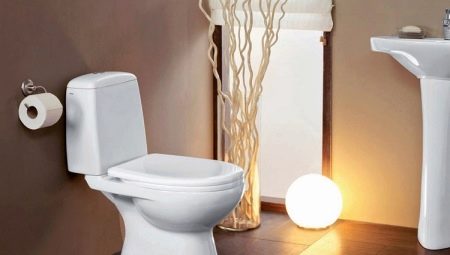If you are starting a repair in an apartment, then the choice of the type of toilet for the release is limited to the options for a mounted sewer system at home. But most often today you can find toilets with an oblique or horizontal outlet. There is still a third variant of the toilets - with a vertical outlet to the floor, but most likely it is relevant only for private houses or very old residential buildings. In new buildings, no one installs sewer under the toilet with a vertical outlet.
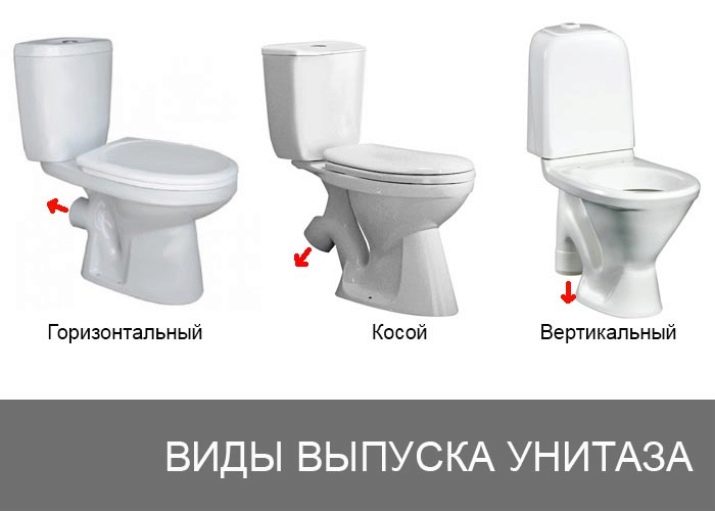
It should be noted that toilet models with vertical and horizontal outlets are classified as direct-flush toilets. Consider the features of toilets with a horizontal outlet due to their wide distribution. Now under the name "direct" they mean basically a toilet with a horizontal outlet. It is also worth mentioning here about a direct-acting toilet with the release of vario - this universal device can be used if necessary with both vertical and horizontal outlets.
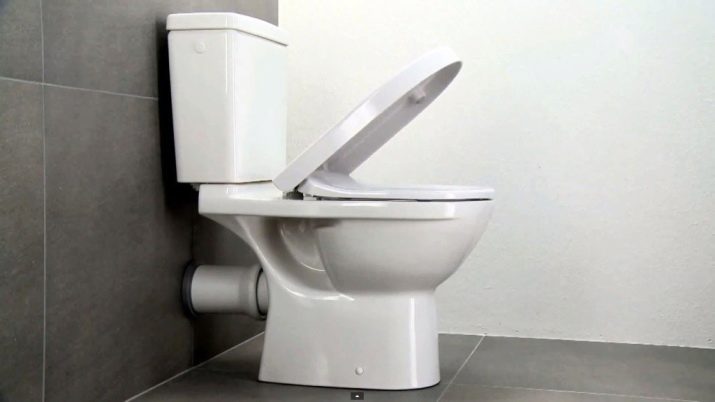
Device
The release of the toilet is called a pipe with a hole, which must be connected to the sewer pipe by means of a docking sleeve. Usually, a tee is installed on the sewer wiring opposite the toilet bowl, having its own pipe, to which the toilet outlet should be connected.
Modern toilets, including those with horizontal outlets, have the same device: this is usually a compact toilet bowl with a ceramic bowl and a lid and a drain tank attached to its tides. In the tank there are:
- a hole for supplying water from the water supply;
- overflow pipe wound into a common drain channel;
- float;
- flap valve;
- Exhaust valve;
- flush lever (button).
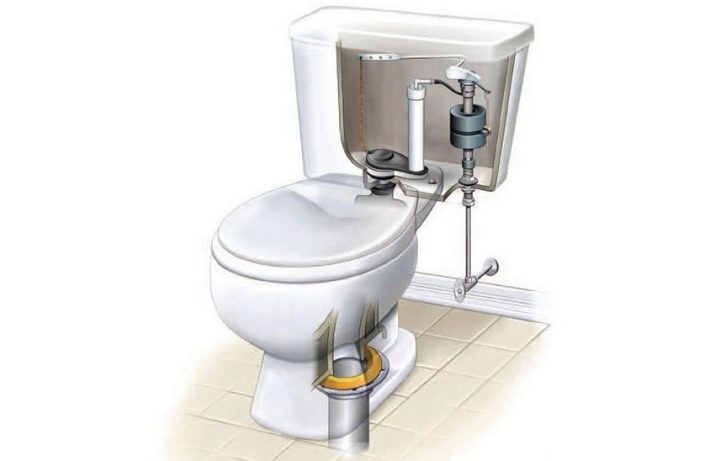
In a bowl there are such devices:
- flush channel connected to the drain channel of the tank and distributing water around the circumference of the bowl;
- siphon;
- exhaust channel (pipe).
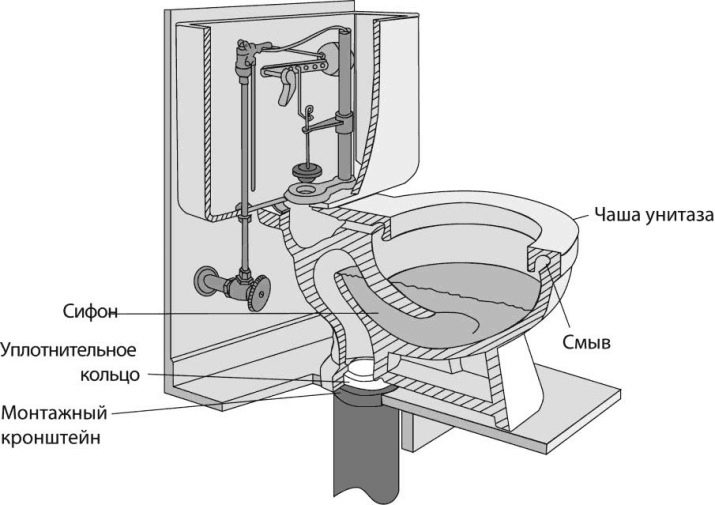
The bowls themselves, except for the angle of release, differ among themselves in the external form and internal configuration of the shelf. Depending on the model, they are:
- dish-shaped which are considered obsolete and unaesthetic;
- visors - with an inclined shelf (bias either forward or backward);
- funnel - more modern options, in which, in fact, there are no shelves at all - stools fall directly into the water (though the anti-splash system is relevant here).
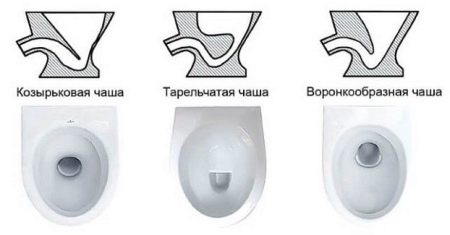
Advantages and disadvantages
The benefits of toilet models with horizontal (parallel to the floor) The release includes the following features and factors:
- suitable even where the toilet used to be with the oblique type of release (that is, there is universality);
- it is possible to connect not only to a horizontal sewer pipe, but also directly to a vertical riser, using adapters;
- mounted close to the wall, without taking up extra space;
- low cost;
- wide range.
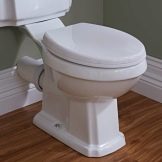
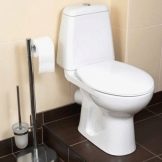
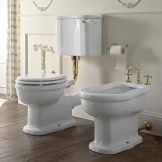
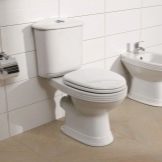
There are also many disadvantages:
- attachment of the installation site to one of the walls of the room - the one where the sewer pipe passes;
- the relative complexity of installation, especially in terms of connecting the outlet to the sewer;
- thorough sealing of the junction of the outlet with the sewer line, the need for control for the first time after installation for leakage;
- possibility of clogging the exhaust channel.

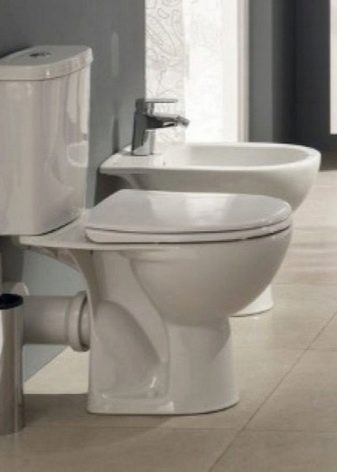
Which solution is better: direct or oblique?
It should be noted that toilets with an oblique or horizontal outlet are generally interchangeable in most cases, so the difference between them is small. But if you can convert a direct model into an oblique one, it’s quite simple, then doing it the other way around is much more difficult. To do this, it is necessary to organize an additional elbow, which complicates the design of the outlet, as well as the already complicated process of sealing joints (in the additional elbow there is a high probability of residual water standing).
Besides, will not do without changing the installation location of the toilet if the distance from the wall of the previously standing toilet with horizontal outflow was minimal. We have to prepare a new platform for attaching the bowl to the floor. In modern technology for the construction of residential buildings, sewers are mounted mainly under the toilet with an oblique outlet. Although another arrangement of sewerage is gaining popularity - under the horizontal toilet toilets.
In any case, the ideal choice is one in which the type of toilet outlet corresponds to a sewer receiver.
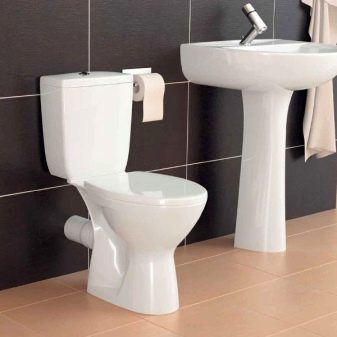
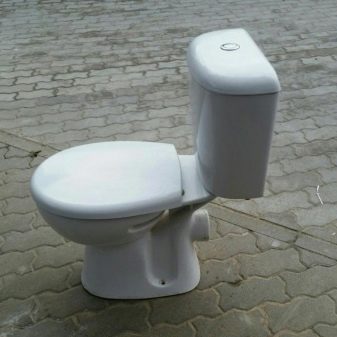
And if we compare the models with each other, without taking into account their interchangeability, then toilet with an oblique type of release is considered a more universal system, since such a bowl can be connected to a sewage pipeline located in relation to it at an angle from 0 to 35 degrees. That is, some errors in the location of the sewer line are permissible, which is quite possible in the construction of high-rise buildings, when not everything is obtained strictly according to the project as a result of previously unplanned circumstances.
Besides, the process of installing a plumbing device with an oblique outlet is simpler, due to the lack of a strict point for its installation and connection to the sewer. This can not be said about the analogue with a horizontal outlet - here the exhaust pipe should be with the connecting pipe on the sewer strictly opposite each other.
And it also matters that in the inclined outlet sewage does not linger, and in the direct horizontal, no doubt, some of them remain on the walls, at the joints, which eventually leads to clogging and complete obstruction of the pipeline.Direct-type toilets often have to be disassembled in parts of the outlet and cleaned.
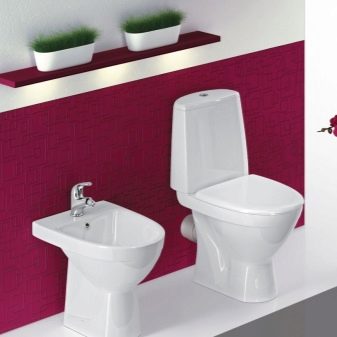

Varieties
Toilets with a horizontal outlet are produced in a wide variety of modifications. We will name the main models at the installation site.
- Floor standing. Ordinary (everyone knows them) toilets both today and in the last century. Attached to the floor. Basically, compact toilets are now installed.
- Outboard. These models are hung on the wall, have a high release and are divided into frame and block systems by the method of fastening. All communications (and in some cases the cistern) are hidden behind the false panel or in the wall niche. Under such toilets it is convenient to clean up, since they hang over the floor.
- Attached (wall). Enjoyed popularity recently. They are tightly mounted to the wall, while all communications, like the suspended models, are hidden, and only the bowl remains on the outside. The difference from the hanging ones is that the bowl is not suspended, but mounted on the floor, as are the floor-mounted toilet options.
Thus, these models can be considered a kind of symbiosis of the first two - floor and outboard.
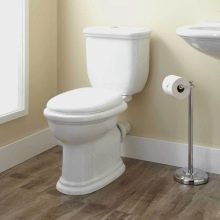

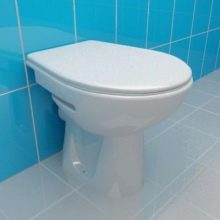
According to the design of the drain tanks, the toilet bowls are divided into several varieties.
- With a high drain. The tank is mounted on the wall and has a drain pipe. The model itself is archaic, found in old houses, however, such models, but slightly improved, can be found on sale. Sometimes they are used in modern houses, where the decoration is designed in the so-called historical style. Pretty noisy design.
- With a low drain. A standard flush system in which a plastic or ceramic cistern is mounted low above the toilet and has a short flush pipe.
- Hidden tanks. They are built into the wall and closed with an easily dismountable finish. Outside, only the flush lever remains.
- Compact bathroom. The tank is mounted on the bowl. The most common type of toilet today.
All models whose tanks are attached to the wall are included in the group of hanging tanks.
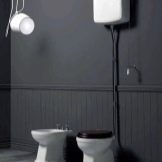
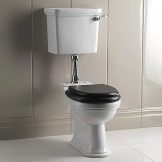
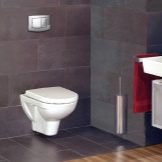
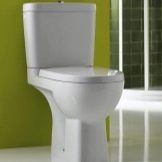
Dimensions
Choosing a toilet for your home in style, design or just the color of the tile, you should not forget about its size in relation to the area of the bathroom. This is of no small importance.
First, measure the depth of the room where the plumbing device will be installed, and divide this value in half - this will be the length of the horizon, or the border over which the toilet should not be made. Hence, you need to build on when choosing plumbing. If the area of the toilet room is quite large, then it is hardly worth thinking about such measurements, since you can choose not only a large toilet, but also put a bidet next to it.
As for the height of the bowl, it all depends on personal preferences and especially on the growth of a person. It is recommended to focus on the tallest member of the family, as the children grow quickly, and the toilet is placed for more than one year. According to GOST, domestic enterprises produce toilet bowls in the following sizes:
- for children's models - 33.5x40.5x29 cm;
- for adults (without shelf) - 40x46x36 cm;
- for adults (with a shelf) - 37x60.5x34 cm.
The first digit in size indicates the height, the second - the length, the third - the width of the bowl.
And taking into account the fact that there are many foreign-made models on sale, the standards of which do not comply with our GOST, then The optimal dimensions of the toilets for most of our bathrooms have been calculated: 38x48x37 cm. For people who have large weight and high growth, the length can be selected up to 60 and even 70 cm - there are also such models.

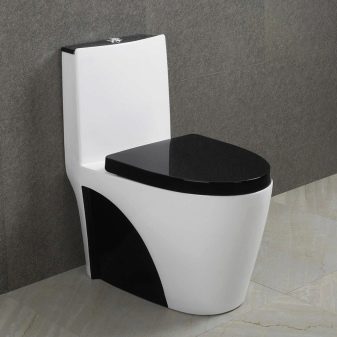
How to choose?
Of course, the choice of toilet is a personal matter, it depends on the taste and preferences of the owners themselves. One likes compact models, the other with a tank hanging on the wall, and the third - angular options. As for the manufacturers - other buyers have a craving for German plumbing, others have a craving for Czech, and still others have nothing against domestic toilets, just to work well.
But still, you can recommend to adhere to certain criteria in the process of choosing the toilet, so as not to be mistaken.
- If you choose high-quality and expensive plumbing, first of all pay attention to the models of European and American manufacturers. There are very interesting specimens made of stone and even glass (of course, not transparent).
- Consult professional plumbers about choosing the best toilet model.
- Before buying, measure the diameter of the sewer pipe to which you want to connect the toilet.
- Decide for yourself what external shape and color the new plumbing device should be.
- If you want to get a siphon type of toilet bowl, then know that we have few such toilet bowls sold. Repair can cost a lot of money, and some parts have a risk, in general, not to be found.
- Try sitting on your chosen bowl to find out your convenience.
- Pay attention to the cleanliness and noise of flushing.
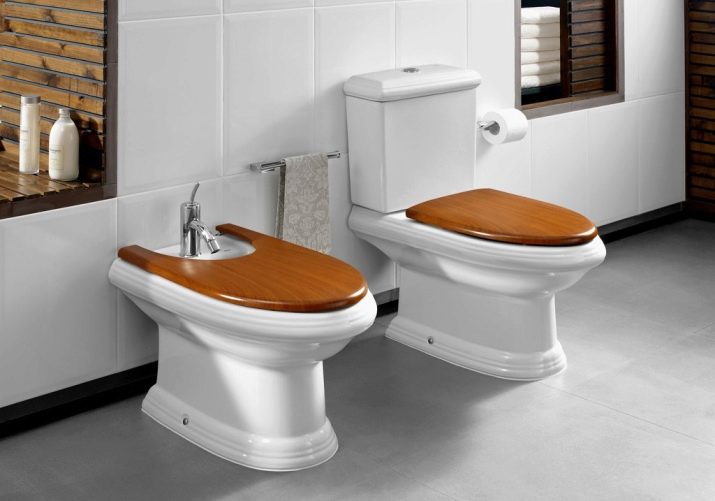
The following video will help you with the choice of toilet.
